Aston Microphones: The MusicTech Interview
Our sporadic series of interviews focusing on the brands and people within the music-production industry continues with the new microphone kids on the block: Aston Microphones. With two MusicTech awards under its belt already, this is a brand that looks set to grow and grow… Aston Microphones has only been in existence for a few […]
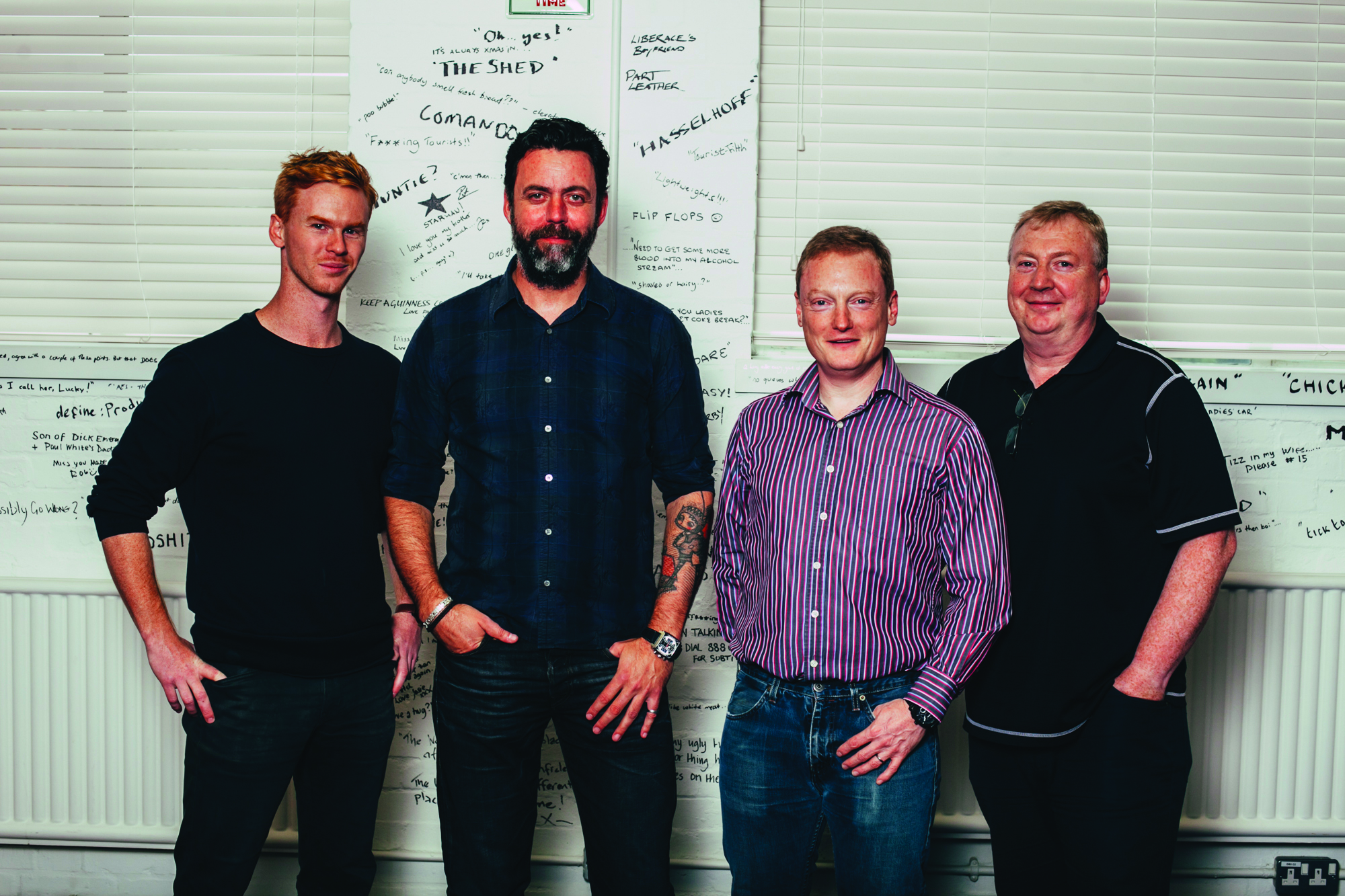
Our sporadic series of interviews focusing on the brands and people within the music-production industry continues with the new microphone kids on the block: Aston Microphones. With two MusicTech awards under its belt already, this is a brand that looks set to grow and grow…
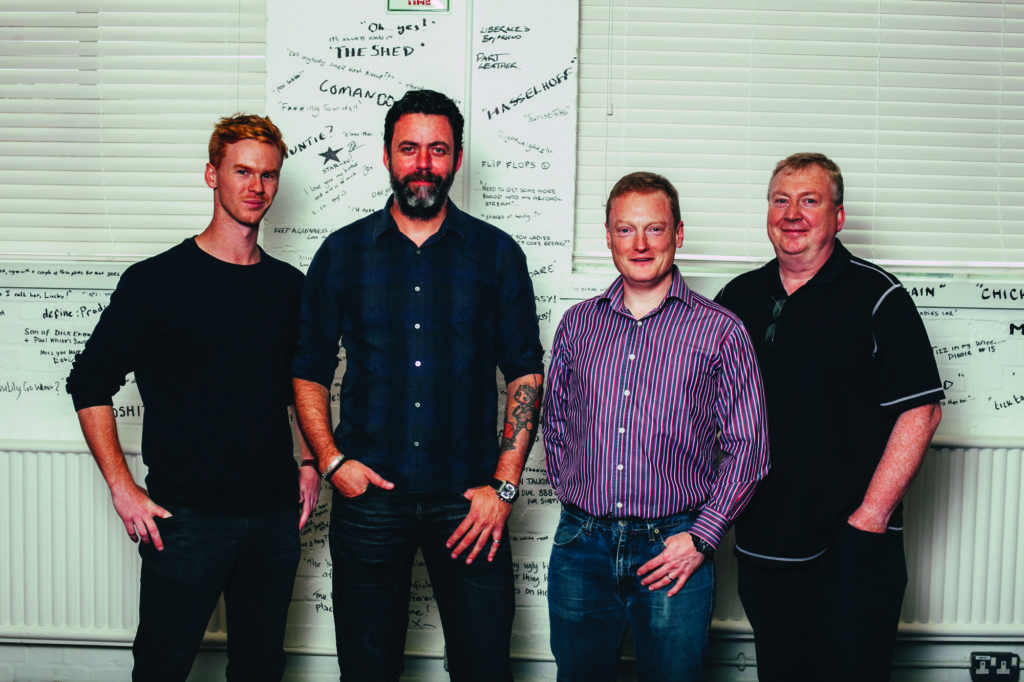
Aston Microphones has only been in existence for a few months, but has already received rave reviews in MusicTech, winning 10/10 for the Origin, a fixed cardioid, large-diaphragm condenser mic, and 9/10 for the Spirit, a large-diaphragm condenser mic a couple of months later. With more products planned for 2016, we caught up with MD James Young…
MusicTech: Let’s start with the history…
James Young: Phil Smith and I founded Sonic Distribution in 2002. Today, we represent a number of premium brands including Waves, J Rockett, On-Stage plus MunroSonic and Rupert Neve Designs in which we also have ownership. Together with Mitch Carey, we also founded and created the mic brand sE Electronics from the company’s formation in 2002, through to July 2014, when this long-standing partnership met an untimely end.
For years, I’d wanted to bring mic manufacturing back to the UK to follow the model we achieved with our speaker brand, MunroSonic. With this in mind, and now missing the mic brand we’d spent 12 years building, we decided the best way to show the world what we were really made of, was to do it all again, better, and in the UK. So Aston Microphones Ltd was conceived in January 2015, established in September and launched to market two months later. As well as being MD, I’m also creative director for the Aston brand, and heavily involved in product development.
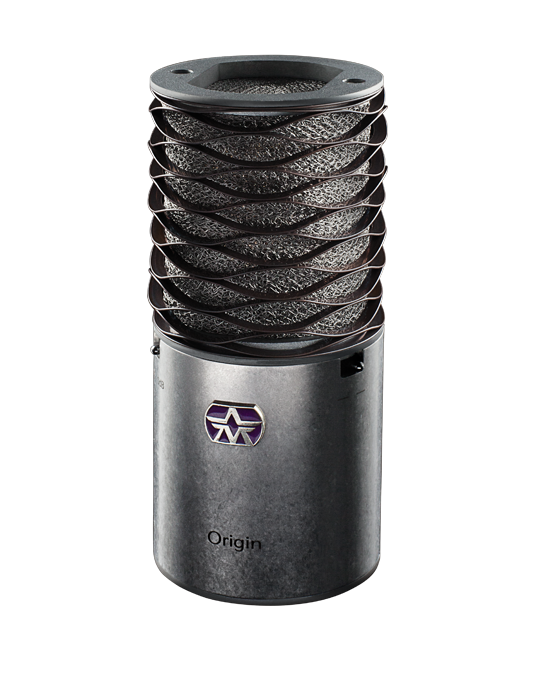
The Aston Origin
MT: What makes a good mic?
JY: There’s no such thing as a bad mic, you just need to find the application for it. Of course, that’s a little tongue in cheek because some mics are truly awful, but most are useable, and a mic which might be crappy on vocals can be wonderful on a guitar cab and so on.
But what makes a truly great mic is one which isn’t hyped, has character without overwhelming the performance, and which doesn’t need lots of EQ and compression to make it sound ‘right’ – that said, there are a fair few mics which fit that bill, not hundreds, but quite a few, and then it’s all about the character and how and when you use that to best effect. Most of the mics which fall into that category are very expensive indeed… I could count on one hand the number of sub-£300 condenser mics which have been universally described as fitting that particular bill and two of them are Astons!

MT: What was your original goal?
JY: I wanted to create a genuinely global UK-manufactured mic brand, which would stand apart from the glut of Chinese OEM brands in its innovation, technical and engineering excellence, and sonic performance. Something new and unique in a market often described as crowded, more because everything is the same than because there are too many brands.
MT: How key was the ‘British’ angle?
JY: Isn’t it strange that the home of the music industry, the UK, isn’t known for making the one product that translates every vocal, every guitar track, everything non-synthesised: the microphone? For some weird reason, we’ve left that to Germany, USA and China – I’d like to change that.
So it was a gut feeling, rather than market research, which drove me, partly for the satisfaction of proving it can be done in today’s market, partly because I believe the British brand is still very much alive and kicking, especially in the USA and Far East, and partly to make it easier to control quality and have the supply chain local. Most of all, though, it was something I simply needed to do.
I spent 12 years bringing innovation, technical expertise and brand awareness to a Chinese company and ultimately lost something which had been a huge part of my life. I realised I’d learned so much from that experience that I certainly couldn’t walk away from a product area that I really love, and I like the bit in business where most people think you’re crazy for even trying, and then you pull off something that nobody else had the balls to do – ‘me too’ has never appealed to me in the slightest!
The very first decision we made was how to approach the project from a technical-design POV. We perceived two choices: buy in OEM product, brand it and add a ‘Designed In The UK’ moniker as so many other brands do, both in the EU and the USA especially, or do something from the ground up.
The first option would have been quicker, but what contribution do you make to the music industry, when all you’ve done is the same old thing again? If you’re in it just to make money that’s okay, but I think it’s about building a legacy to be proud of. So we had to go ground up. That, for us, meant innovative design, showcasing British engineering excellence; striking, but not overplayed, styling (very British!); actual UK manufacturing and not just localised assembly; local UK suppliers (even for our packaging), and all of this at highly competitive price points… so not much of a task, then!
We questioned everything about mic design – it made us really think about how little invention there is in the studio-mic world, and what became clear was that you could reduce costs dramatically with good engineering. We got rid of the need for costly paint jobs to cover up none-too-pretty workmanship. We have a tumbled stainless steel finish on our mics which also reduces wear and tear, so the mics will look great 10 years from now.
Every single mic we looked at in our research (over 400 of them) had the same basic design: a fixed, rigid mesh head. This is a fundamentally flawed method of protecting the delicate capsule, as a knock will either dent the head or do internal damage. Our wave-form spring headstock not only looks unique, but is vastly superior in terms of taking a bash, and brought a huge cost saving.
All of these engineering savings meant we could focus resources on the sound, and yet we’d actually dramatically improved the technical performance of the mic… that’s good British engineering.
We also worked with a panel of 33 of the top producers and engineers in the UK. They, in a six-month series of blind tests, developed and finally chose the sound for each mic. It’s another unique approach and one that has paid off spectacularly, as the response has been nothing short of astonishing. People love the look, the sound even more, and are comparing our mics, not to £200 to £400 competitors, but to Neumann, Telefunken and Sony.
Spirit In The Sky
MT: Tell us about the range?
JY: So far, we’ve released four products. The Origin is our single-pattern large diaphragm condenser; the Spirit our transformer-balanced multi-patter condenser (and a very different sound); the British-made Aston Rycote; and our latest release, the Halo reflection filter, another ground-breaking product and a big step up in tech for that product type. Halo is another example of deconstructing the perceived wisdom and inventing something really new which radically improves performance.
Our next product will be a stereo pair of pencil mics. But pencil-mic innovation has been even thinner on the ground than large-diaphragm mics. They’re fundamentally boring to look at and have some major intrinsic flaws which nobody has addresses. Now I can’t tell you what those are yet, and how we’ve found some very cool solutions to them, as I don’t want to spoil the launch this September. But I can guarantee that when you see what we’ve created you’ll be blown away…
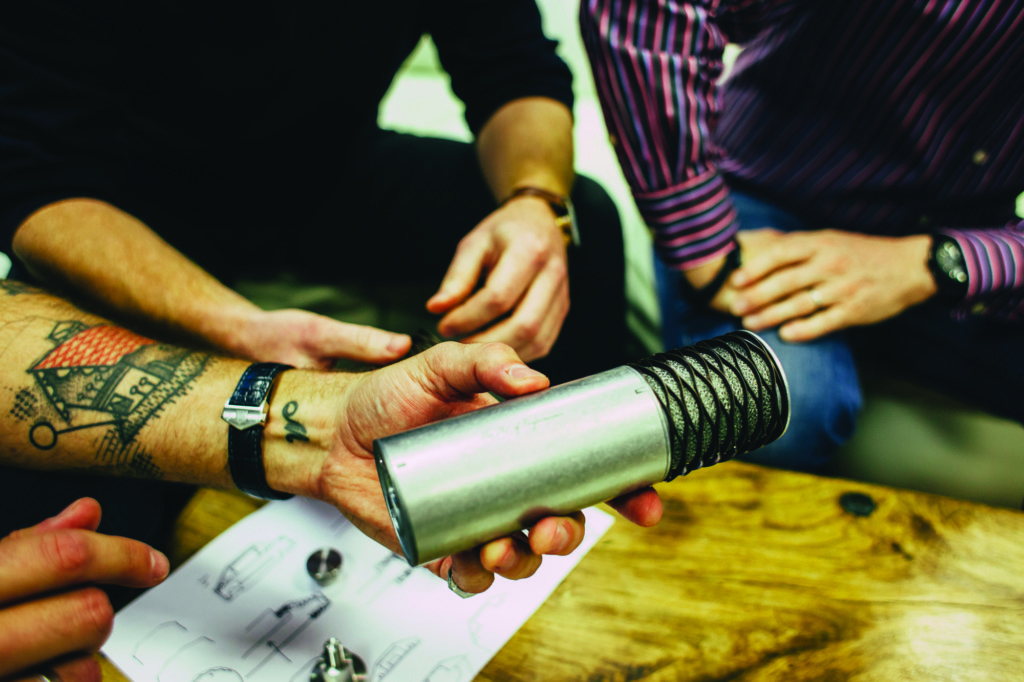
Aston’s condenser mics incorporate the company’s signature protective wave-form mesh head
MT: And tell us specifically about the Halo reflection filter?
JY: Mitch [Carey, partner at Sonic who sadly died in 2010] and I conceived the original sE Reflexion Filter back in 2005. It was the first portable vocal booth and revolutionised project-studio recording, and indeed found its way into most professional studios, too.
But the technology has remained the same for the last 10 years. In fact, I lobbied to change it when I was still at sE, but got nowhere. Roll on 2016, and Halo: it’s bigger, lighter, with better diffusion, better absorption, better hardware, and with two associated patents and a registered design. Again, we wanted to bring something to the industry, not just more OEM re-hashes.
There are a number of fundamental improvements that needed to be made to all the reflection filters on the market, because they are all basically the same design, some better than others, but still have the same flaws.
They are generally small, the good ones are very heavy, the hardware is generally pretty clunky and difficult to use, they have a tendency to overbalance, offer little diffusion, very little isolation, and don’t do anything for source audio, creating primary reflections on the ceiling and floor, generally the two most reflective areas in a room! Halo addresses all these issues head-on, with patented PET felt forming the main body of the filter.
MT: Which high-profile engineers and producers use your products?
JY: We have more than 300 very high-profile producers and engineers working with us and working with artists as diverse as Jay Z and Beyoncé, to the Royal Shakespeare Company. I think the best quote yet was from Rik Simpson (Coldplay producer), who just said “The Halo is f***ing amazing”. But what I hear the most is, “How the hell did you guys do this? These are £2,000 mics for £200, and made in the UK!” The answer is we listened, we tried something daring and new instead of safe, and we let real producers and engineers develop the sound.
The Aston Spirit
MT: Which production techniques are you most commonly asked about ?
JY: Probably “How do I get such-and-such a sound?” People starting out think there is some special trick they’re missing. They want to know how things are done. Of course, there are plenty of techniques to learn in getting a good, technically sound recording, but that’s not what they’re asking. You learn and refine that stuff as you go along.
MT: And what is your reply?
JY: Use your ears. No, really, not in a patronising way. I mean experiment, break the rules. Production should be about soundscape creation, creating something more than just a clean recording, by the book. The greatest tracks are the ones which threw the rule book away, went past ABC and tried anything and everything until they hit gold.
MT: What’s the biggest production mistake you hear and your cure-all advice for it?
JY: People who add 2:1 compression on every vocal because ‘that’s what you do’, or use the same pre-set EQ every time. It kills tracks and makes everything sound very much like an un-thought-out demo. And the other one is over-editing: every phrase pitch-corrected and time-shifted to ‘perfection’ because ‘you can’. Again, it boils down to using creative judgement to breathe life into a track, not ironing out another bland recording. Use your ears!
MT: Any advice for entering the world of music production with the view to making a living from it?
JY: It’s very hard… Much easier to make money in producing adverts, jingles, library music, etc. So if you really want to be a creative producer, be prepared for a long slog with no guarantees of financial reward. Making it big as a producer is no easier than making it big as an artist – there are a lot of good people who never really get ‘known’, but then if you enter the music industry to make money, you’re either very naïve indeed, or not the kind of person I’m likely to want to know! Music is art, passion, love… money comes way down the list.
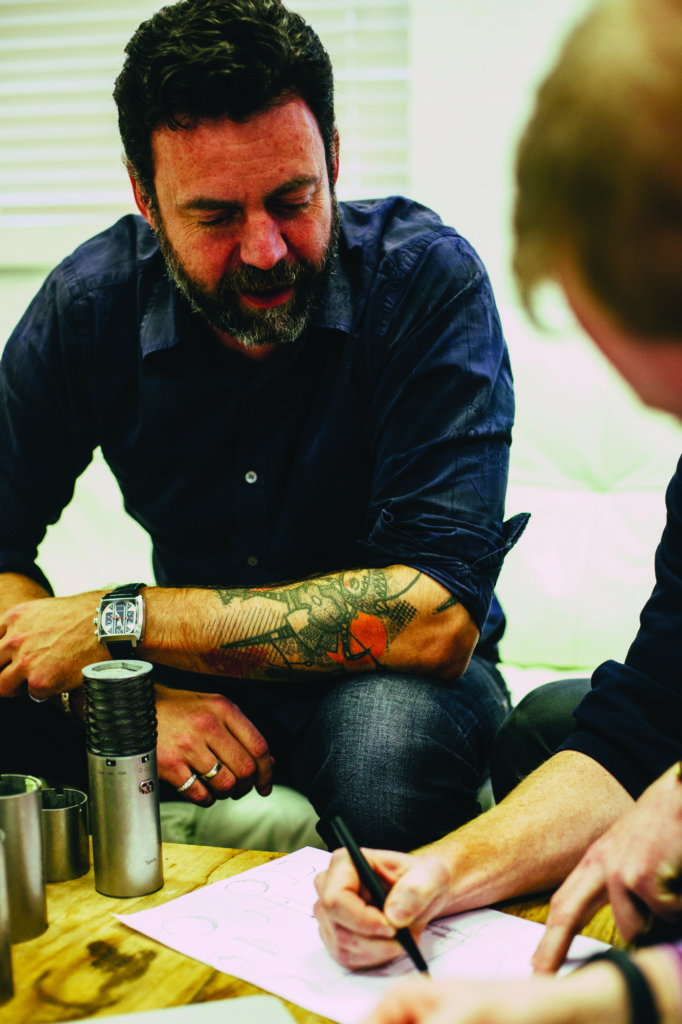
MT: How would you like Aston to be perceived?
JY: I’d like to leave my mark as the mad idiot that achieved the seemingly impossible… a global UK-manufactured mic brand. I’d like Aston to be the British equivalent of Neumann in their heyday: iconic, must-have products, sought after on a reputation gained by excellence, but still remaining as a family brand.
I never want Aston to become a soulless public company – that’s too far removed from the people who make the music.
MT: What’s the future of music production?
JY: I’d like to think that the public will get sick and tired of the trash they’re being fed and re-discover music as more than a backing track. I hope they will demand higher quality creative production – we’ve got more than enough technical quality to last a lifetime. How about we go for creative excellence now and give music back its broken heart?